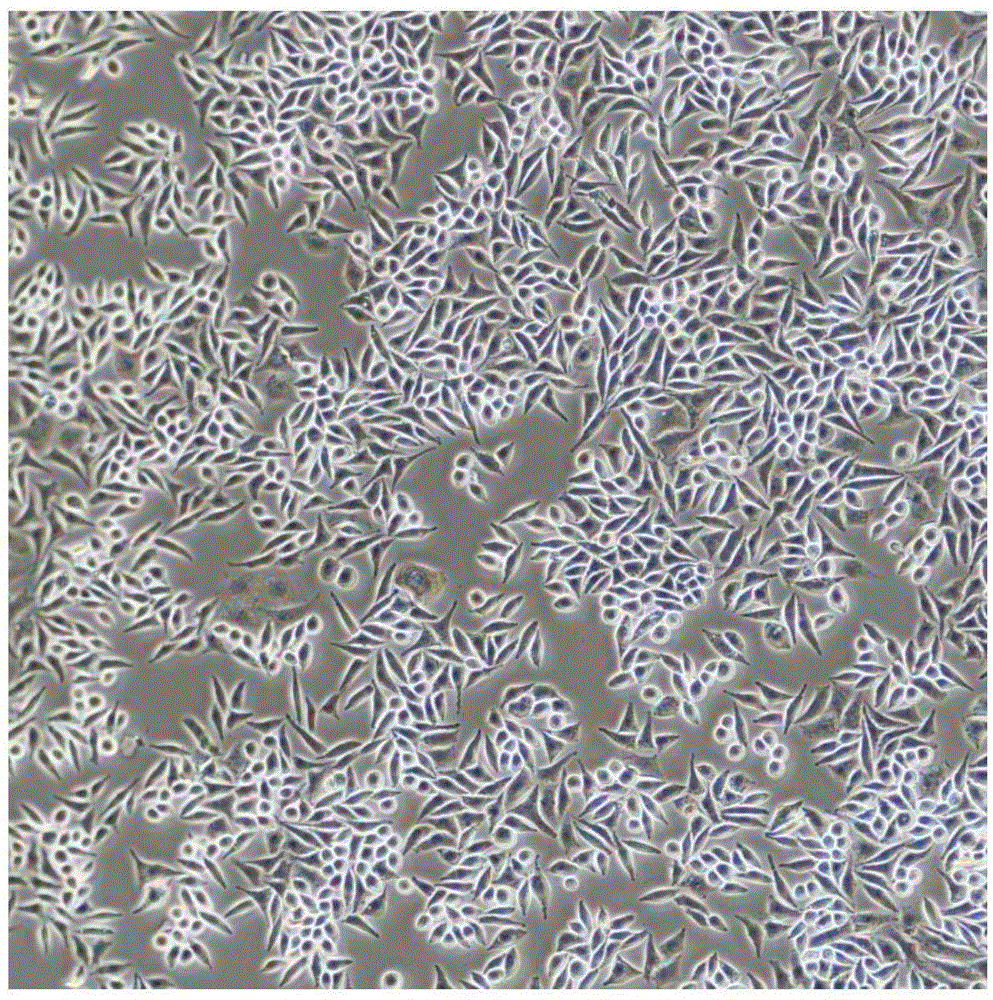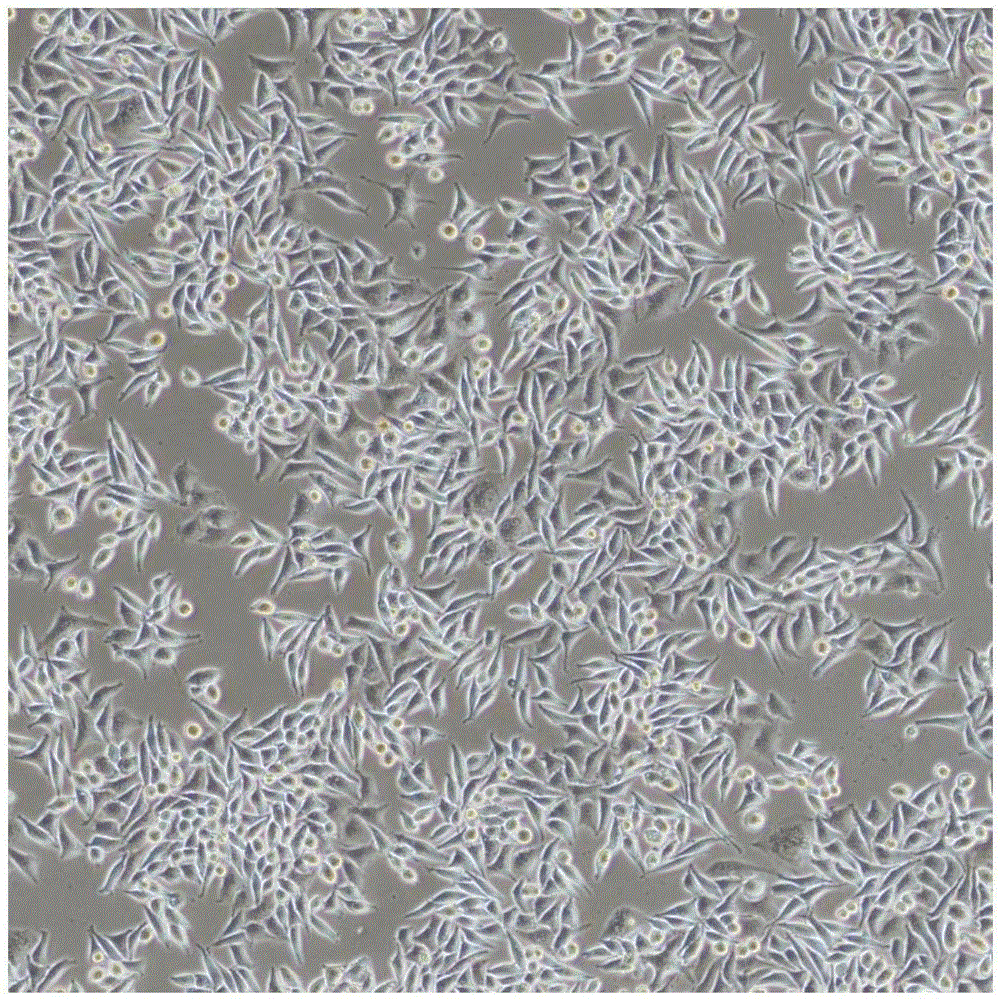Blotting material used for specific recognition of cells, and preparation and applications thereof
A technology of imprinted materials and specificity, which is applied in the direction of analytical materials, instruments, measuring devices, etc., can solve the problems of inability to obtain antibodies, poor cell purity and sensitivity, and inability to perform effectively, so as to achieve good biocompatibility and stability, and improve Purity and Sensitivity, Ease of Handling Effects
- Summary
- Abstract
- Description
- Claims
- Application Information
AI Technical Summary
Problems solved by technology
Method used
Image
Examples
Embodiment 1
[0026] Preparation of cell imprinted material (MIP1) based on SMMC-7721 cell template
[0027] SMMC-7721 cells were cultured on the surface of the twelve-well plate matrix material, when about 80% of the bottom of the culture plate was covered ( figure 1 ), wash the cells with a phosphate buffered saline (PBS) solution of pH=7.2, then add a mass concentration of 4% paraformaldehyde solution to fix the cells, after 5 minutes, wash and remove the paraformaldehyde solution with a PBS solution of pH=7 . Then add 1 ml of pre-polymerized aqueous solution consisting of 30% acrylamide and 1% methylenebisacrylamide to each well of the twelve-well plate, and then add 1 microliter of tetramethylethyl ether. Diamine and 10 microliters of ammonium persulfate aqueous solution with a mass concentration of 10% initiate the curing reaction of the prepolymerization solution. After 20 minutes, the imprinted layer formed by solidification was separated from the matrix material and the imprinted...
Embodiment 2
[0030] Imprinted material (MIP1) for identification and capture of SMMC-7721 cells
[0031] Make two replicates of cells at a concentration of 1 x 10 6 Cells / ml of SMMC-7721 cells were inoculated on the imprinted surface of MIP1 and the surface of NIP respectively. After 2 hours, the cells were attached to the imprinted sites on the surface of MIP1, but there were no SMMC-7721 cells at the non-imprinted sites and the NIP surface. Attach ( Figure 4 ), indicating that the imprinted site of MIP1 can identify and capture target cells rapidly, efficiently and sensitively through multiple interactions with SMMC-7721 cells. SMMC-7721 cells were further added to human blood samples. According to the above method, MIP1 also realized the specific recognition and enrichment of SMMC-7721 cells from blood.
Embodiment 3
[0033] Preparation of cell-imprinted material (MIP2) based on MCF-7 cell template
[0034] Same as Example 1, using MCF-7 cells as a template to prepare imprinted material (MIP2) that can specifically recognize and capture MCF-7 cells, such as Figure 5 shown.
PUM
 Login to View More
Login to View More Abstract
Description
Claims
Application Information
 Login to View More
Login to View More - R&D
- Intellectual Property
- Life Sciences
- Materials
- Tech Scout
- Unparalleled Data Quality
- Higher Quality Content
- 60% Fewer Hallucinations
Browse by: Latest US Patents, China's latest patents, Technical Efficacy Thesaurus, Application Domain, Technology Topic, Popular Technical Reports.
© 2025 PatSnap. All rights reserved.Legal|Privacy policy|Modern Slavery Act Transparency Statement|Sitemap|About US| Contact US: help@patsnap.com



